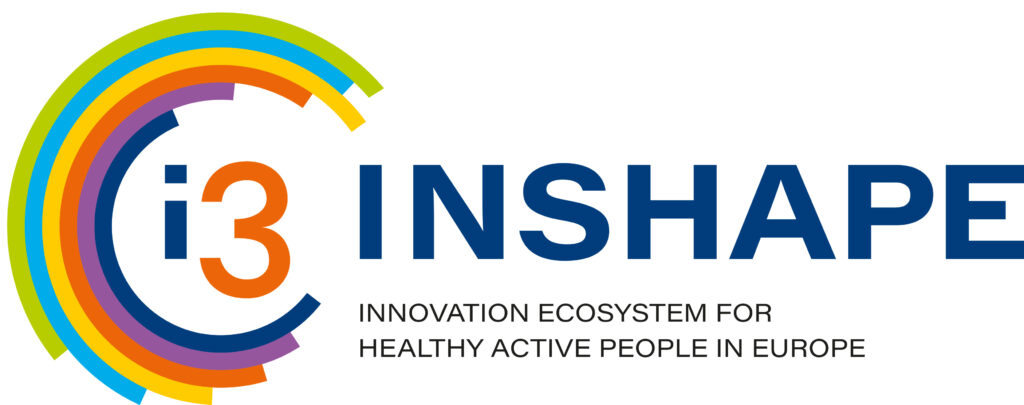This summer, LAB University of Applied Sciences piloted the Onasport wearable sweat sensor in collaboration with Spanish healthtech company Onalabs. The pilot was part of the INSHAPE project, which promotes innovation in health and wellbeing technologies across Europe. The Onasport device is designed to monitor hydration, electrolyte loss, and inferred lactate levels through sweat, offering athletes and coaches real-time insights into physiological responses during training (Onalabs 2025).

Why Sweat Matters
Sweat contains valuable biomarkers that can reveal hydration status, electrolyte balance, and even lactate levels, which are critical for understanding physical exertion and recovery. Onasport uses patented electrochemical sensors to decode these biomarkers non-invasively, offering continuous monitoring without the need for blood samples or lab visits. This technology has been validated in high-performance sports centers and is part of a growing trend in wearable health monitoring. (Onalabs 2025).
Hydration monitoring is especially important for endurance athletes, as even a small loss in body fluids can significantly impair performance (Ojala, Jaakola & Mehtänen 2024). Wearable devices like Onasport help athletes avoid dehydration and optimize their fluid intake based on real-time data. This makes it possible to make informed decisions during training and in competitions. It supports peak performance and faster recovery after training. The users do not have to rely on generic guidance, but they can plan their training individually.
User-Centered Testing with Endurance Athletes
The pilot involved Finnish endurance athletes who tested the device over two separate one- to two-month periods. Before the trial, participants shared their expectations and goals. During the testing phase, they used the device actively and were asked to keep daily journals to document their experiences. After the trial, feedback was collected through surveys and group discussions.
According to the preliminary results from the pilot, the athletes found the device easy to use and appreciated the real-time feedback on hydration and exertion. Several participants reported adjusting their fluid intake based on the data provided, which they felt improved their recovery and performance. However, some reported challenges with sensor placement and data consistency during high-intensity sessions. These experiences will help to improve the device so that it is easier to use and works better even in challenging sports situations.
The user-centered approach aligns well with recent research emphasizing the importance of usability and user experience in wearable health technologies. Studies show that long-term engagement and effectiveness of wearables depend heavily on how intuitive and comfortable they are to use, especially in real-world conditions. (See e.g. Baskan & Goncu-Berk 2022.)
Expanding the Scope: Winter Sports on the Horizon
Next, Onasport will be tested with Finnish lacrosse teams. Both men’s and women’s squads will take part in the pilot. This time the focus will be on the coach’s perspective along with the athlete’s feedback on user experience.
One of the key interests for future development is testing the device in winter sports. Cold conditions present unique challenges for wearable technologies, and the Onasport sensor has not yet been evaluated in such environments. LAB and Onalabs are exploring opportunities to extend the pilot to winter athletes, which could open new avenues for product development and research.
INSHAPE Project – Bridging Innovation and Wellbeing
LAB and Onalabs were brought together by I3-INSHAPE project. The collaboration with Onalabs exemplifies the INSHAPE project’s mission to connect companies, researchers, and users in co-developing solutions that support individual wellbeing. The I3-INSHAPE initiative, co-funded by the EU, aims to build a European network of innovation hubs that support SMEs in scaling up health and sports technologies across regions (EPSI 2025). LAB’s role as a testing and development partner highlights the university’s commitment to applied research and its ability to contribute to international innovation ecosystems.
Author
Hanna Laine is a lecturer in Physiotherapy, Expert in INSHAPE Project, LAB University of Applied Sciences


References
Baskan, A. and Goncu-Berk, G. 2022. User Experience of Wearable Technologies: A Comparative Analysis. Applied Sciences. Vol.12 (21), p.11154. Accessed 25.8.2025. Available at https://doi.org/10.3390/app122111154
EPSI. 2025. I3-INSHAPE. Accessed 28.8.2025. Available at https://old.epsi.eu/project/inshape/
Ojala, A., Jaakola, V. & Mehtänen, T. 2024. Nesteensaanti. Terve urheilija -ohjelma. Tampereen urheilulääkäriasema. Accessed 28.8.2025. Available at https://terveurheilija.fi/urheilijan-ravitsemus/nesteensaanti/
Onalabs. 2025. ONASPORT. Accessed 26.8.2025. Available at https://onalabs.com/en/onasport
StockSnap. 2017. Nainen, lenkkeily, käynnissä. Pixabay. Viitattu 10.11.2025. Saatavissa Nainen Lenkkeily Käynnissä – Ilmainen valokuva Pixabayssa




